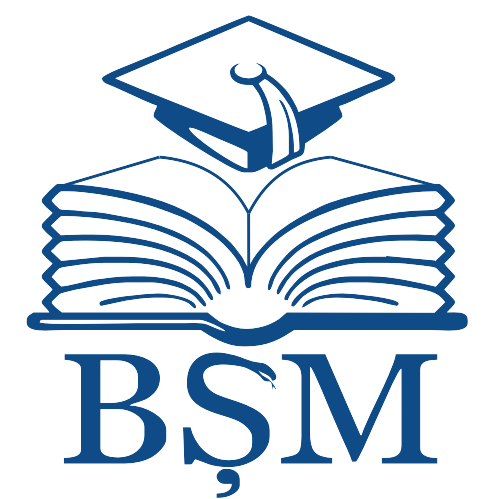|
|
- IRMS - Nicolae Testemitanu SUMPh
- 1. COLECȚIA INSTITUȚIONALĂ
- MATERIALE ALE CONFERINȚELOR ȘTIINȚIFICE
- The 19th Edition of the South-East European Ophthalmological Society Congress. October 18-19th, 2024, Chisinau, Republic of Moldova
- The 19th Edition of the South-East European Ophthalmological Society Congress Abstract book. October 18-19th, 2024, Chisinau, Republic of Moldova
Please use this identifier to cite or link to this item:
http://hdl.handle.net/20.500.12710/30313
| Title: | Low vision rehabilitation services in the Republic of Moldova: current landscape and future directions |
| Authors: | Ghidirimschi, Tatiana
Bakketeig, Hans Bjørn |
| Issue Date: | 2024 |
| Publisher: | CEP Medicina |
| Citation: | GHIDIRIMSCHI, Tatiana; BAKKETEIG, Hans Bjørn. Low vision rehabilitation services in the Republic of Moldova: current landscape and future directions. In: The 19th SEEOS Congress: abstract book, Oct. 18-19th, 2024 / org. commit.: Eugeniu Bendelic [et al.]. Chişinău: CEP Medicina, 2024, pp. 8-9.ISBN 978-9975-82-393-7. |
| Abstract: | Introduction: The Republic of Moldova, with a population of approximately 2.42
million, has a significant vision impairment issue, with a 19.5% prevalence in
individuals over 50, according to a 2012 RAAB survey. Since the LOW VISION Center’s
establishment in 2009, it has made substantial progress in addressing low vision
needs through various services.
Aim of the Study: The study aims to review the current state of low vision services
in the Republic of Moldova, highlight recent advancements, and discuss future
directions, including the necessity for a national center to provide comprehensive
services for visually impaired people and prevent avoidable blindness.
Methods and Materials: The effectiveness and reach of the LOW VISION Center’s
services from 2009 to June 2024 were analyzed. The study examined various aspects
of the Center’s operations, including comprehensive assessments, assistive product
provision, outreach services, equipment support, training, academic development,
advocacy actions, and preventive measures.
Results:
• Service Reach: The Center has conducted 14478 consultations, including
3772 for children, reflecting its significant impact.
• Assistive Products: The Center has distributed a variety of optical and nonoptical aids (7986), including magnifying glasses, telescopes, and closed-circuit
television systems, at no cost to patients. These devices significantly enhanced
daily functioning and opportunities for education and employment.
• Outreach Services: Programs have been implemented to extend services to
rural and remote areas, addressing access disparities.
• Equipment Support: Through Norwegian partnerships, 45 hospitals and
polyclinics have been equipped with primary eye care tools, and 9 hospitals have
received advanced ophthalmological equipment.
• Training and Education: The Center has organized 43 training seminars and
educational workshops for 1424 ophthalmologists, optometrists, students,
teachers, public authorities to enhance their understanding of low vision
rehabilitation and encourage the referral to complementary services.
• Academic Development: On September 1, 2017, in partnership with the
Norwegian NGO, the University of Southeast Norway, and the State University of
Medicine and Pharmacy “Nicolae Testemitanu” launched an academic program
for optometrists. The Center represented through years a professional resource
for the optometry education. • Legislative Advocacy: Advocacy has resulted in key legislative changes,
including regulations for technical aids (GD No. 567/2011) and support for
prosthetics and assistive devices (Law No. 116/2021).
• Preventive Measures: Annual screenings for diabetic retinopathy and World
Sight Day celebrations emphasize the commitment to preventing avoidable
blindness.
Conclusions: The LOW VISION Center has significantly advanced low vision care in
the Republic of Moldova through comprehensive assessments, provision of assistive
devices, outreach, and equipment support. Its contribution to improving eye care
infrastructure, professional training, and policy advocacy have been transformative.
Despite these achievements, there are ongoing challenges such as ensuring
sustainable service delivery and expanding outreach. Establishing a National Center
for the Visually Impaired is crucial to centralize and enhance service provision,
ensuring coordinated care for all visually impaired individuals in the country. The
Center’s work has set a strong foundation for future advancements in low vision
care, serving as a model for comprehensive and impactful rehabilitation services. |
| metadata.dc.relation.ispartof: | The 19th Edition of the South-East European Ophthalmological Society Congress. October 18-19th, 2024, Chisinau, Republic of Moldova |
| URI: | https://repository.usmf.md/handle/20.500.12710/30313 |
| ISBN: | 978-9975-82-393-7 |
| Appears in Collections: | The 19th Edition of the South-East European Ophthalmological Society Congress Abstract book. October 18-19th, 2024, Chisinau, Republic of Moldova
|
Items in DSpace are protected by copyright, with all rights reserved, unless otherwise indicated.
|


